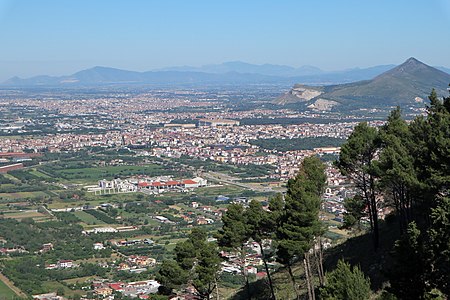Caserta
CasertaCities and towns in CampaniaMunicipalities of the Province of Caserta

Caserta (Italian pronunciation: [kaˈzɛrta] (listen)) is the capital of the province of Caserta in the Campania region of Italy. An important agricultural, commercial, and industrial comune and city, Caserta is located 36 Kilometers north of Naples on the edge of the Campanian plain at the foot of the Campanian Subapennine mountain range. The city is best known for the 18th-century Bourbon Royal Palace of Caserta.
Excerpt from the Wikipedia article Caserta (License: CC BY-SA 3.0, Authors, Images).Caserta
Via Trento, Caserta Centro Storico
Geographical coordinates (GPS) Address Nearby Places Show on map
Geographical coordinates (GPS)
| Latitude | Longitude |
|---|---|
| N 41.066666666667 ° | E 14.333333333333 ° |
Address
Via Trento
Via Trento
81100 Caserta, Centro Storico
Campania, Italy
Open on Google Maps






